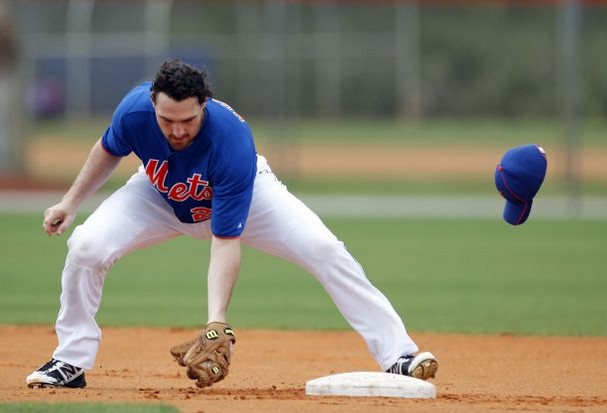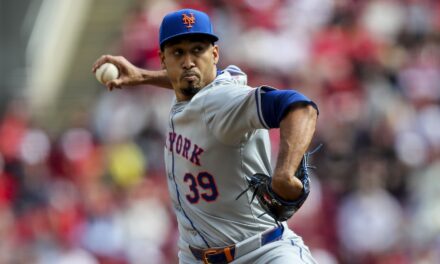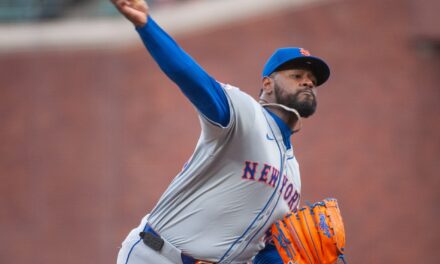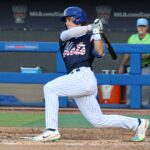Anthony DiComo of MLB.com takes a look at the Mets defense through the eyes of John Dewan is always finding new ways to analyze defensive metrics, which have come a long way quite recently.
One thing DiComo aptly points out is the “unorthodox depth chart of the Mets” and how their unique circumstances and personnel mix have created a “bizarre mashup of fielders playing out of position.” That could make for a wildly interesting calvacade of defensive blunders this summer.
By most measures the Mets were a poor defensive team last season, ranking 25th in fielding percentage and last in Fangraphs.com’s Ultimate Zone Rating, a more advanced — though equally flawed in small samples — measure of defensive worth. The Mets also ranked 28th in statistician John Dewan’s Defensive Runs Saved system, as chronicled in Dewan’s triennial “Fielding Bible.”
Dewan is one the pioneers behind revolutionizing the way defense is measured, and on a few occasions I’ve posted on his Defensive Runs Saved system right here on MMO. What I didn’t know until I read DiComo’s article, was that most of the 30 MLB teams rely on Dewan’s data to assist in making their own organization decisions with regards to player defense.
Quite honestly, it’s refreshing to see that most front offices have finally evolved where Advanced Metrics are concerned, and are taking full advantage of the incredible amount of much more precise data which can be used to evaluate players from college through the draft, and from the lowest level of the Minors all the way to the Major Leagues.
Measuring defense has always been the toughest of all things to accurately assess, and that’s because of the many variations between ballpark factors, defensive positioning, range, arm strength, and about two dozen other individualized factors that make every singular defensive play so unique.
Ultimate Zone Rating (UZR) has surpassed the age old standard of Fielding Percentage on a wide scale, but it still has some flaws and doesn’t tell you much about a player if you’re only looking at small sample size like a year or two.
Defensive Runs Saved is a step up in my opinion and that’s why I like to rely it whenever I can. (So does Bill James)
“We’re at the point where we think we’ve really got a good handle on measuring defense,” Dewan said. “It was always the holy grail of ‘How can you figure out how to measure defense?’ And we think we’ve reached a very good spot now where we’ve got a good handle on measuring defense.”
I believe we are still a long way from finding the perfect defensive measure, if one ever comes to pass at all. But using the ones that are available now, certainly tells an MLB executive far more about a player’s defensive capabilities than those old that old stand-by Fielding Percentage whose results rarely seemed to match the eye test.
Incidentally, the Mets ranked ranked 28 in Dewan’s Defensive Runs Saved system last season, and you can expect that to possibly get worse now with so many Mets playing out of position on an everyday basis.
Last season, as I reported here in an earlier post, the Mets middle-infield defense was ranked the worst in baseball, while Ike Davis was ranked the best defensive first baseman in 2010.
You see what I mean about DRS passing the eye test?















